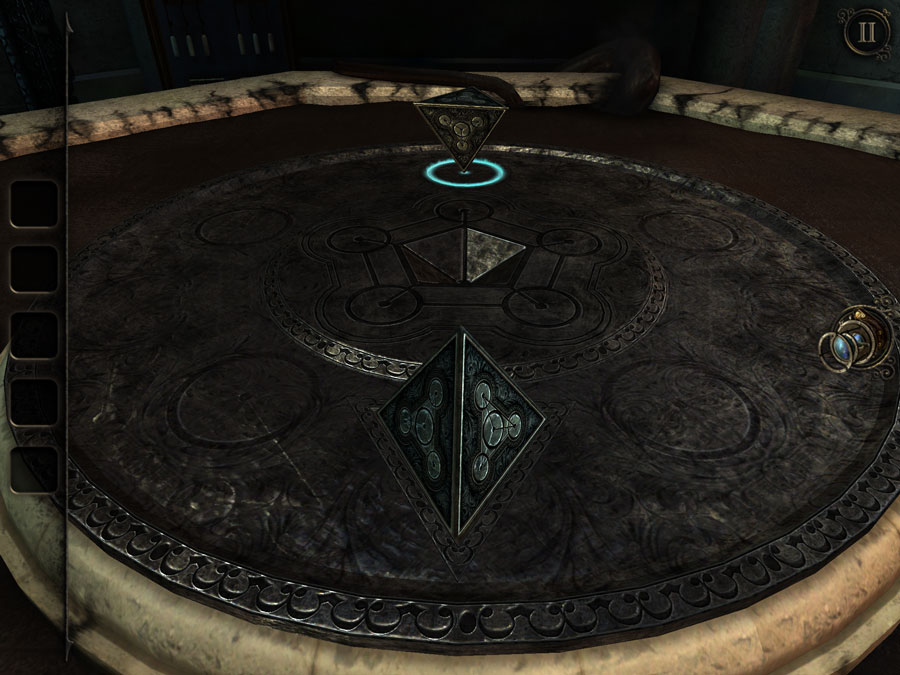

A. Formations
It's pretty much common sense to come up with a good formation for your army but the basic idea in most situations is to have your infantry in front, ranged units behind, cavalry protecting the flanks and your general right behind the infantry. Having the general next to your infantry boosts their morale. If you have larger numbers than the enemy, it's usually a good idea to spread your formation so you can surround the enemy.
B. Flanks and Rear
The flanks and rear of any army are its most vulnerable points. By placing cavalry on the side you can help protect your flanks. When facing an enemy, always try to attack its flanks or rear with your army, especially your cavalry. A cavalry charge to the rear can devastate any unit and lower its morale. When facing an army unit such as Greek hoplite phalanx, you must use the slow speed of the enemy to your advantage to flank the opponent. The Phalanx is particularly vulnerable anywhere except the front. One tactic that seems to work is to slowly flank the enemy is to form your troops in a slight half circle so you can slowly surround your enemy. Never let your infantry become isolated, try to keep them in formation in a line so they dont feel like they are being surrounded.
C. Morale
The morale of your troops is the most important aspect of a battle. If your troops are surrounded they will lose morale and try to escape in a rout. Try to prevent this and use this to your advantage by surrounding troops whenever possible. Showering arrows on the enemy army lowers its morale Also, launching a surprise attack on an unprotected side has the same effect. Having enemy generals near your troops lowers their morale slightly, this is also true of your general and enemy troops. Keep in mind that more experienced troops have higher morale. New troops will most likely rout if your general flees.
All units on the battlefield know who is winning the battle by observing their surroundings. If they see any unit or a general fleeing, they are more likely to flee. Use this to your advantage; if you have a unit surrounded and they are routing, let them flee rather than let them fight their hardest to get out of their situation. Once other enemy units have seen them, mow them down with your cavalry to show the other army who is the boss.
D. Unit strengths
Each of the different unit types is vulnerable to another type. Cavalry is vulnerable to frontal spear attacks. Light Infantry is vulnerable to cavalry and Heavy infantry is also vulnerable to side attacks from cavalry but is effective in hand to hand combat. Artillery is good offensively against almost any unit but is extremely weak defensively and dies quickly after a head on attack.
Elephants are a great unit against infantry and lower the morale of enemy troops. They can be supressed by a large number of ranged units and scare tactics such as incendiary pigs. Your Elephants may also turn and attack your own troops in which case you have the option of using the special ability where your rider executes them.
Archers are very effective against light troops and mounted archers are a good way to harass enemy troops. Always keep archers them away from the infantry and cavalry. Put them behind your infantry when the enemy is close and protect them with your cavalrywhen necessary. If you have the opportunity to flank the enemy using archers,make sure you take off skirmish mode and attack, you will catch the enemy off guard. When the enemy is far away put the archers in the front to shoot arrows as the enemy approaches then bring them behind.
E. Fatigue
Your units will slowly or quickly get fatigued based on their actions. Use this to your advantage by forcing attacking armies to march to you and by running only when necessary.
F. Terrain
Use the terrain to your advantage. When fighting near or in a forest, lure the enemy and launch surprise attacks. Place one or two units out in the open while you hide the rest of your army in the forests. However, remember that archers perform poorly near trees. Also, remember that generals are not hidden in forests. When you are fighting on a map with a slope, try to control the higher ground and avoid an uphill battle. Units move very slowly when marching uphill and attack much less effectively; the opposite is true downhill. If you have the option to wait out the battle and the weather doesn't suit your army, wait until the weather changes. Some units are better suited to certain weather condtions than others. Read unit descriptions to find out more details about each units ideal figting conditions. Some terrain such as mountains is impassible to your armies. Try to find an alternate route. Certain choke points such as bridges are important strategic locations. Defending a bridge is much easier than defending on an open plain. You can also hide your whole army on the campaign map in a wooded area to launch surprise attacks on an enemy army.
G. After they flee
When the enemy starts to flee, continue the battle rather than end it so you can use your cavalry and attack dogs to run over the fleeing enemies. You can gain more experience for your units this way. Using your general's cavalry to run over routing units is a quick way to gain experience and skills for the general.
H. Attacking with multiple armies
Whenever possible, try to attack with multiple armies by surrounding the terrain around the enemy with your forces. When one of your armies is adjacent, the AI is in control of the army and helps in the fight. Any type of reinforcement usually helps win the battle but be wary of the AI poorly managing your valuable Generals and armies.




 The Room 3 walkthrough - complete puzzle guide for Chapter 3
The Room 3 walkthrough - complete puzzle guide for Chapter 3 Slogan Logo Quiz Answers All Levels
Slogan Logo Quiz Answers All Levels 100 Brands Answers – Complete Walkthrough for All Levels
100 Brands Answers – Complete Walkthrough for All Levels 100 Pics Flags Pack Levels 1-100 Answers
100 Pics Flags Pack Levels 1-100 Answers Reveal 2 Letter B Pack Answers
Reveal 2 Letter B Pack Answers